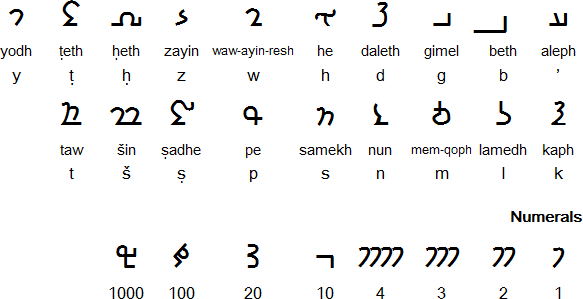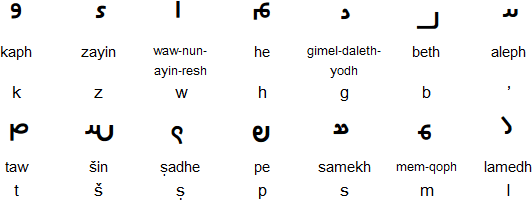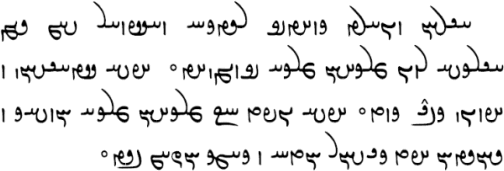The Middle Persian script developed from the Aramaic script and became the official script of the Sassanian empire (224-651 AD). It changed little during the time it was in use, but around the 5th century AD, it spawned a number of new scripts, including the Psalter and Avestan scripts.
There were a number of different versions of the Middle Persian script:
The inscriptional version of the script appears in inscriptions in clay fragments dating from the reign of Mithridates I (171-38 BC), and only in coin and rock inscriptions. In this version the script has 19 letters which are not joined together

Source: http://www.fontspace.com/unicode/block/Inscriptional+Pahlavi
The name Psalter Pahlavi refers to the "Pahlavi Psalter", a translation of a Syriac book of psalms from the 6th or 7th century AD. There are also inscriptions in Psalter Pahalvi in a bronze cross found in what is now Afganistan. This version of the script has 18 letters which are joined together.

Source: http://std.dkuug.dk/jtc1/sc2/wg2/docs/n4040.pdf
Book Pahlavi is a version of the script with 12 or 13 letters, which are joined in writing, and some form complex ligatures. This is the version of the script for which there is most written material, and it was in common use until about 900 AD, after which its use was confined to Zoroastrian priests.

Source: http://www.unicode.org/L2/L2013/13141-book-pahlavi.pdf

Beginning of the Husrō ī kavādān ud rēdak-ē:
Source: http://www.fravahr.org/spip.php?article185
The Parthian script developed from the Aramaic script around the 2nd century BC and was used during the Parthian and early Sassanian periods of the Persian empire. The latest known inscription dates from 292 AD.

Information about Middle Persian scripts and language
http://en.wikipedia.org/wiki/Middle_Persian
http://en.wikipedia.org/wiki/Pahlavi_scripts
http://www.parsig.org/
http://sites.la.utexas.edu/persian_online_resources/history-of-the-language/middle-persian/
Parthian and Middle Persian written literature
http://www.artarena.force9.co.uk/parthlit.htm
Pahlavi literature
http://www.farvardyn.com/pahlavi.php
Pahlavi dictionary
http://www.rabbinics.org/pahlavi/MacKenzie-PahlDict.pdf
Pahlavi fonts
http://www.iranchamber.com/scripts/pahlavi_script.php
http://www.fravahr.org/spip.php?article185
http://minerva.stkate.edu/offices/academic/classics.nsf/pages/pahlavifonts/
Circle of Ancient Iranian Studies at the School of Oriental and Asian Studies (SOAS), University of London: http://www.cais-soas.com
Ancient Berber, Arabic, Aramaic, Chorasmian, Elymaic, Hatran, Hebrew, Manichaean, Nabataean, North Arabian, Pahlavi, Palmyrene, Parthian, Phoenician, Paleo-Hebrew, Proto-Sinaitic / Proto-Canaanite, Psalter, Punic, Sabaean, Samaritan, Sogdian, South Arabian, Syriac, Tifinagh, Ugaritic
Page last modified: 15.03.23
[top]
Why not share this page:

If you like this site and find it useful, you can support it by making a donation via PayPal or Patreon, or by contributing in other ways. Omniglot is how I make my living.
Note: all links on this site to Amazon.com, Amazon.co.uk
and Amazon.fr
are affiliate links. This means I earn a commission if you click on any of them and buy something. So by clicking on these links you can help to support this site.
Get a 30-day Free Trial of Amazon Prime (UK)
If you're looking for home or car insurance in the UK, why not try Policy Expert?
[top]